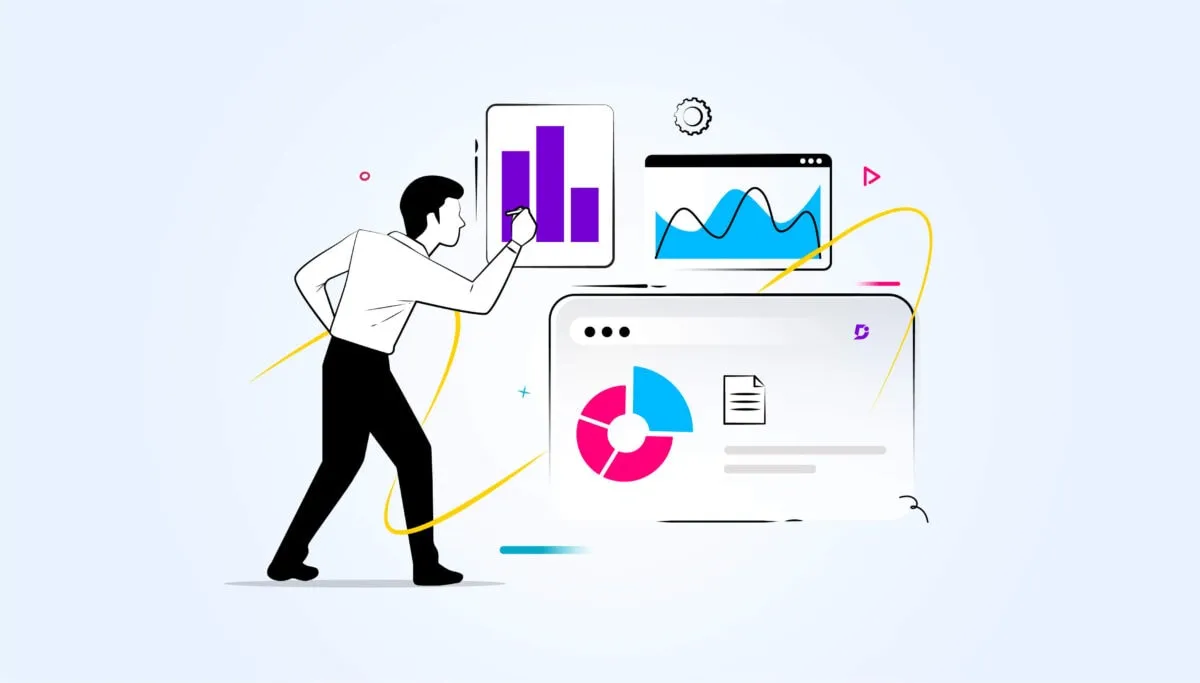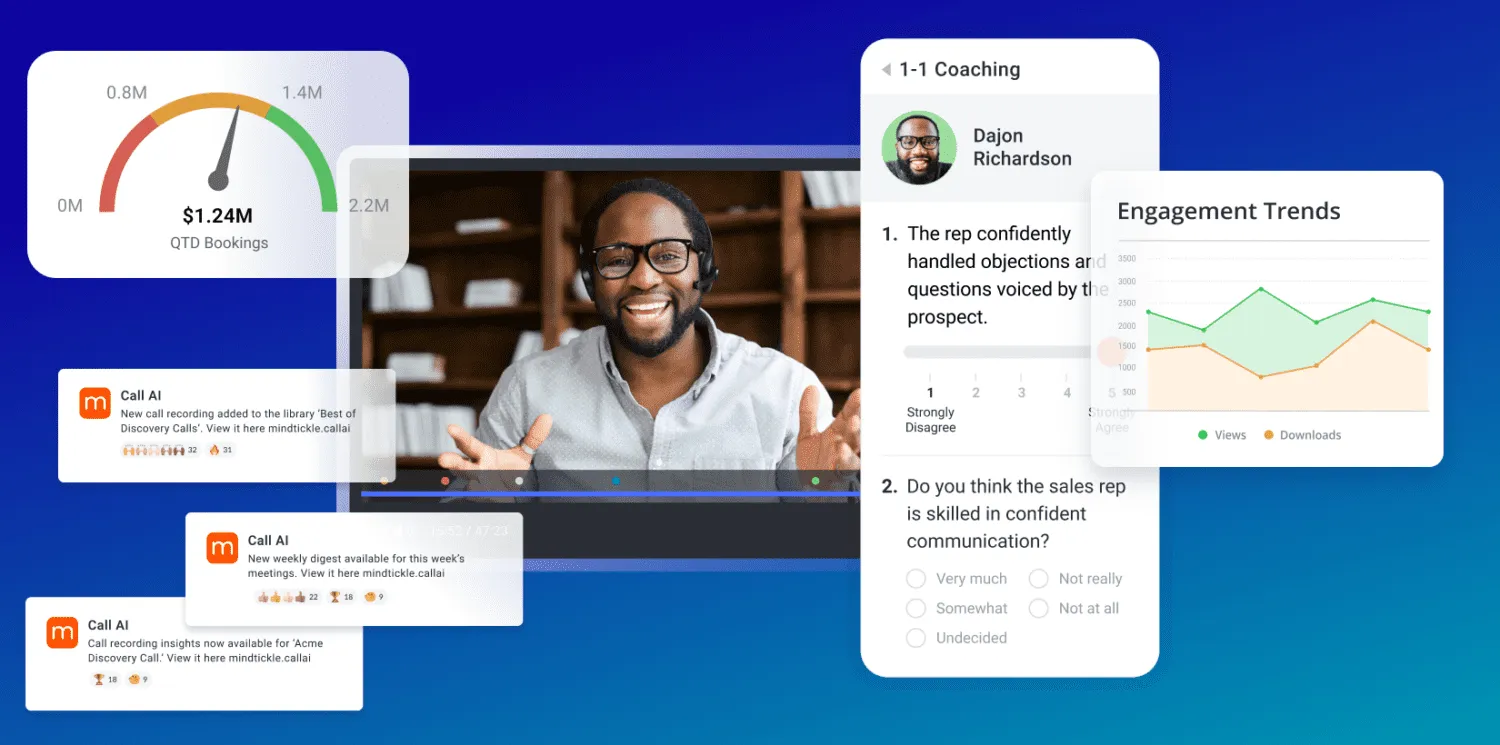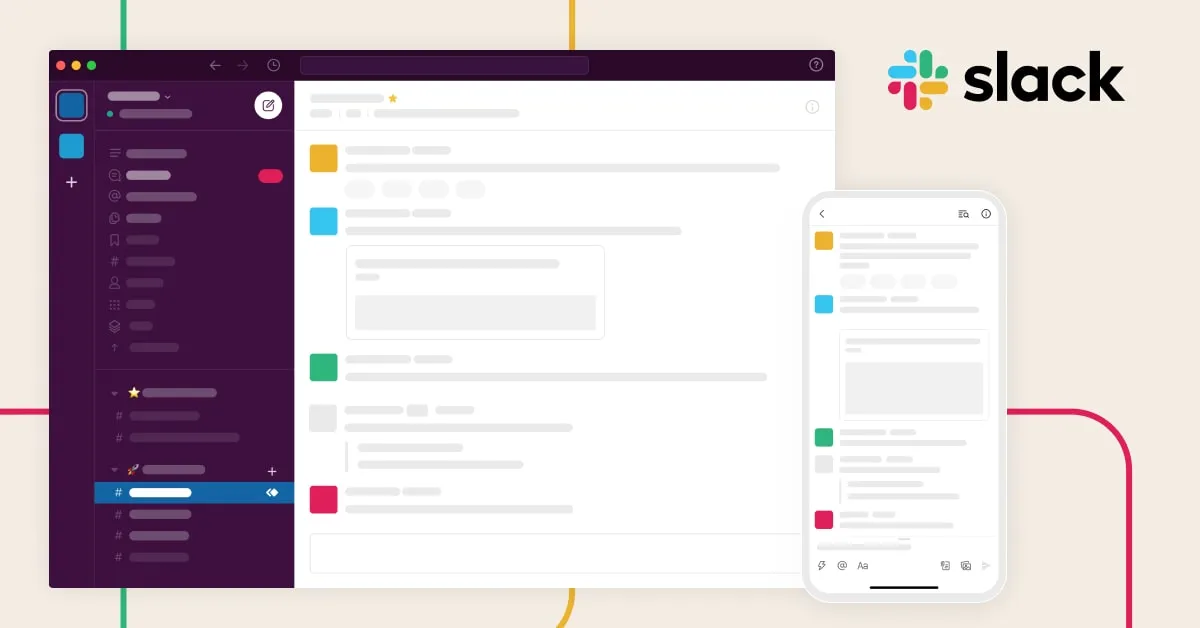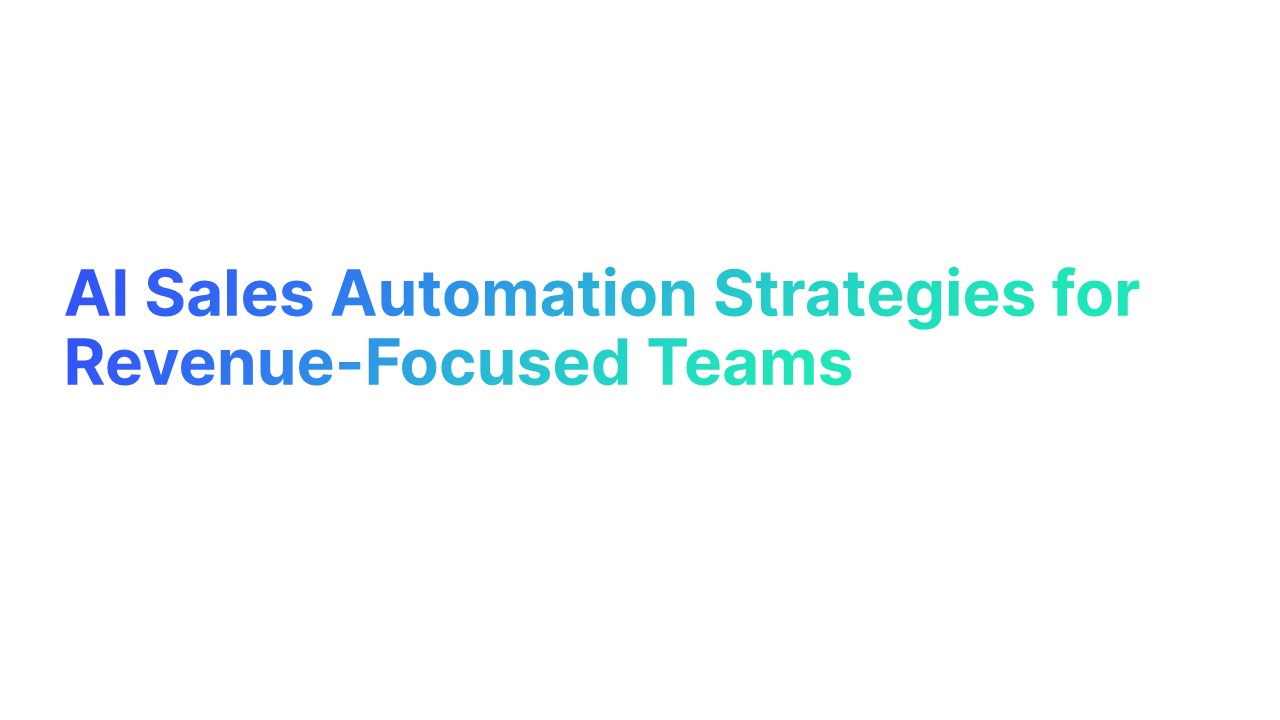What is Sales Enablement?

Sales enablement is about giving sales teams the tools, information, and training they need to sell better. These tools help them understand their products, customers, and how to make more sales. Companies with good sales enablement strategies often see higher sales success.
According to Salesforce, businesses that use sales enablement see a 15% increase in win rates.
Responsibilities of Sales Enablement Manager and Sales Reps in Sales Enablement

What does a Sales Enablement Manager do?
A sales enablement manager has a big job. Sales managers play a crucial role in overseeing the sales enablement strategy and ensuring its success. They make sure the sales team has everything they need to succeed.
Here are some of their main responsibilities:
1. Creating Training Programs
- They design training sessions to teach sales reps about new products.
- They use videos, books, and quizzes to make learning fun and easy.
2. Providing Sales Tools
- They choose the best software and tools to help sales reps do their jobs.
- Tools might include CRM systems and sales enablement platforms like Highspot or Gong.
3. Sharing Information
- They make sure the sales team has the latest information about products and customers.
- They create guides and handbooks for quick reference.
4. Analyzing Data
- They look at sales data to see what is working and what is not.
- They use this information to improve training and tools.
Example: If a company launches a new product, the sales enablement manager would create a training program. They would also provide tools to help sales reps understand and sell the new product.
What Sales Reps do in Sales Enablement?
Sales reps are the ones who use the tools and training provided.
Here are some of their key responsibilities:
1. Learning and Using Tools
- Sales reps need to learn how to use the tools provided by the sales enablement manager.
- They use CRM systems to track customer information and sales processes.
2. Attending Training Sessions
- Sales reps attend training sessions to learn about new products and sales techniques.
- They practice what they learn to improve their sales skills.
3. Following Sales Processes
- Sales reps follow the sales processes outlined by the sales enablement team.
- They use step-by-step guides to ensure they do not miss any important steps.
4. Providing Feedback
- Sales reps give feedback on the tools and training they receive.
- This feedback helps the sales enablement team improve their programs.
Example: A sales rep might use a new CRM tool to track their sales calls. They would follow the process outlined in their training to make sure they are using the tool correctly.
14 Best Sales Enablement Strategy

1. Define Sales Enablement Clearly
Why It's Important:
Understanding sales enablement is the first step. It helps everyone know their roles and how to achieve sales success.
How to Implement:
- Create a clear definition of sales enablement for your team.
- Share this definition with everyone in the sales and marketing teams.
- Make sure everyone understands their part in the sales enablement process.
Example: A study by CSO Insights shows that companies with a clear sales enablement definition see a 13.7% improvement in win rates.
2. Align Sales and Marketing
Why It's Important:
Sales and marketing alignment means both teams work together. This helps in creating a smooth sales process and better customer experiences. Integrating sales operations with sales enablement ensures a smooth workflow and better performance.
How to Implement:
- Hold regular meetings between sales and marketing teams.
- Share goals and strategies to make sure everyone is on the same page.
- Use a shared CRM system to track progress and share information.
Example: According to HubSpot, companies with strong sales and marketing alignment see 208% more revenue from marketing efforts.
3. Develop a Comprehensive Sales Enablement Process
Why It's Important:
A good sales enablement process gives your sales team the tools and information they need to succeed. This process helps in training, tools selection, and content creation.
How to Implement:
- Identify the needs of your sales team.
- Provide training programs to fill knowledge gaps.
- Choose the right sales enablement tools and platforms.
- Create and share sales enablement content like guides, videos, and checklists.
Example: High-performing companies are 2.2 times more likely to have a formal sales enablement process, according to Aberdeen Group.
4. Implement Sales Enablement Tools
Why It's Important:
Sales enablement tools make the sales process easier and more effective. They help sales reps manage their tasks, track customer interactions, and access important information quickly. Choosing the right sales enablement software can streamline your sales processes.
How to Implement:
- Choose tools that fit your sales team’s needs. Examples include CRM systems like Salesforce and communication platforms like Slack.
- Train your sales reps on how to use these tools effectively.
- Regularly update and maintain the tools to ensure they work smoothly.
Example: According to LinkedIn, 76% of companies using sales enablement tools see an increase in sales.
5. Leverage Sales Enablement Technology
Why It's Important:
Technology enhances sales strategies by providing data and insights. Sales enablement technology can analyze customer behavior, predict sales trends, and improve sales tactics.
How to Implement:
- Use data analytics tools to track sales performance and customer interactions.
- Implement AI-powered tools to provide sales reps with real-time insights and recommendations.
- Ensure your sales enablement platform integrates with other technology used by your sales team.
Example: Companies that leverage sales enablement technology are 41% more likely to achieve their sales goals, according to CSO Insights.
6. Provide Continuous Sales Training
Why It's Important:
Continuous training helps sales reps stay updated on the latest sales techniques, product information, and industry trends. It ensures they are always prepared to engage with potential customers. A comprehensive sales enablement program includes training, tools, and content for the sales team.
How to Implement:
- Develop a training program that includes regular sessions, workshops, and e-learning modules.
- Use a mix of training methods like role-playing, video tutorials, and quizzes to keep it engaging.
- Encourage feedback from sales reps to improve the training program.
Example: Salesforce found that companies investing in ongoing sales training see a 50% higher net sales per employee.
7. Create a Sales Enablement Charter
Why It's Important:
A sales enablement charter outlines the goals, roles, and responsibilities of your sales enablement team. It ensures everyone knows what to do and why it's important. This clarity helps align the sales team with the company's goals.
How to Implement:
- Write a clear charter that defines sales enablement and its goals.
- Include the roles and responsibilities of each team member.
- Share the charter with the sales and marketing teams to ensure everyone is on the same page.
Example: According to HubSpot, companies with a clear sales enablement charter are more likely to achieve their sales goals.
8. Develop Effective Sales Content
Why It's Important:
Sales content helps sales reps communicate better with potential customers. Good content answers customer questions and provides valuable information. This makes it easier for sales reps to close deals.
How to Implement:
- Create a variety of content, such as brochures, videos, and case studies.
- Ensure the content is easy to understand and visually appealing.
- Regularly update the content to keep it relevant and useful.
Example: Companies that use effective sales content see a 27% higher win rate, according to Demand Metric.
9. Measure Sales Enablement Success
Why It's Important:
Measuring success helps you understand what works and what doesn’t. This way, you can improve your sales enablement strategies. Tracking key metrics ensures that your efforts lead to real results.
How to Implement:
- Identify key metrics to track, such as conversion rates and sales cycle length.
- Use sales enablement tools to collect and analyze data.
- Regularly review the data to find areas for improvement.
Example: According to CSO Insights, companies that measure sales enablement success are 20% more likely to achieve their sales targets.
10. Optimize the Buyer’s Journey
Why It's Important:
The buyer's journey is the path that potential customers take from learning about your product to making a purchase. Optimizing this journey helps sales reps guide customers smoothly through each stage, making it easier to close deals.
How to Implement:
- Map out the buyer's journey to understand each stage.
- Create content for each stage, such as blog posts for awareness, case studies for consideration, and demos for decision.
- Use sales enablement tools to track where buyers are in their journey and provide relevant information.
Example: Companies that optimize the buyer’s journey see a 72% increase in conversion rates, according to Aberdeen Group.
11. Utilize Sales Enablement Platforms
Why It's Important:
Sales enablement platforms provide a centralized place for sales reps to access tools, content, and training. These platforms streamline the sales process and improve efficiency.
How to Implement:
- Choose a sales enablement platform that fits your team’s needs. Examples include Highspot, Gong, and Seismic.
- Train sales reps on how to use the platform effectively.
- Regularly update the platform with new content and tools to keep it relevant.
Example: According to Forrester, companies using sales enablement platforms see a 60% improvement in sales team productivity.
12. Focus on Sales Coaching
Why It's Important:
Sales coaching helps sales reps improve their skills and performance. Regular coaching sessions provide personalized feedback and guidance, making reps more confident and effective.
How to Implement:
- Schedule regular coaching sessions for all sales reps.
- Use real sales calls and scenarios to provide practical feedback.
- Track the progress of each sales rep to identify areas for improvement.
Example: Salesforce found that companies with strong sales coaching programs see a 16.7% higher win rate.
13. Develop a Sales Enablement Team
Why It's Important:
A dedicated sales enablement team ensures that your sales reps have the support they need. This team focuses on creating training programs, providing tools, and developing content to help sales reps be more effective.
How to Implement:
- Form the Team: Hire individuals who have experience in sales and training.
- Define Roles: Assign specific roles such as sales enablement manager, content creator, and trainer.
- Set Goals: Establish clear goals for the team, such as improving sales productivity and increasing sales success rates.
Example: According to CSO Insights, companies with a dedicated sales enablement team see a 15% increase in win rates.
14. Integrate Sales and Customer Relationship Management
Why It's Important:
Integrating sales with CRM systems helps sales reps manage customer interactions more effectively. It provides a centralized place to track customer data, sales activities, and follow-up tasks.
How to Implement:
- Choose a CRM System: Select a CRM system that fits your sales team's needs. Examples include Salesforce, HubSpot, and Zoho CRM.
- Train Sales Reps: Ensure that all sales reps are trained on how to use the CRM system effectively.
- Monitor and Update: Regularly update the CRM with new customer data and sales activities to keep it accurate and useful.
Example: Companies that use CRM systems see an average increase of 29% in sales, according to Salesforce.
7 Sales Enablement Tools
1. Content Management Systems (CMS)
Content management systems (CMS) are tools that help sales teams create, manage, and share content. These systems ensure that sales reps have the right information at the right time to share with potential customers.
Seismic

Why It Matters: Seismic helps sales teams by providing a central place for all their content. It also offers analytics to see what content works best.
Features:
- Content Management: Easily upload and organize sales materials.
- Analytics: Track how content is used and which materials are most effective.
- Personalization: Create personalized content for different customers.
How to Use:
- Upload Materials: Start by uploading all your sales content into Seismic.
- Track Usage: Use the analytics to see which materials are most popular with your sales team.
- Personalize Content: Create personalized content to match different customer needs.
G2 Rating: 4.7/5
Pricing: Contact Seismic for pricing details.
2. Sales Training Platforms
Sales training platforms help your sales team learn new skills and improve their performance. These platforms provide courses, quizzes, and other learning materials.
Mindtickle

Why It Matters: Mindtickle helps sales reps improve their skills through engaging training. This makes them more effective in their roles.
How to Use:
- Sign Up: Create an account and set up your team.
- Assign Courses: Choose relevant courses and assign them to your sales reps.
- Track Progress: Use the analytics to see how well your team is doing and identify areas for improvement.
Features:
- Courses and Quizzes: Mindtickle offers various courses and quizzes to help sales reps learn.
- Gamification: The platform uses gamification to make learning fun and engaging.
- Analytics: Track progress and see which areas need improvement.
G2 Rating: 4.7/5
Pricing: Contact Mindtickle for pricing details.
3. Email Tracking Tools
Email tracking tools help you see what happens after you send an email. They can tell you when someone opens your email or clicks a link.
Yesware

Why It Matters: Yesware helps you understand how your emails are performing. This allows you to follow up at the right time and improve your email strategy.
Features:
- Email Tracking: Know when your emails are opened and links are clicked.
- Templates: Use pre-made templates to save time on writing emails.
- Reports: Get reports on how your emails are performing.
How to Use:
- Install Yesware: Add Yesware to your email client.
- Send Emails: Use Yesware to send your emails and track their performance.
- Analyze Results: Look at the reports to see which emails are working best and make adjustments as needed.
G2 Rating: 4.3/5
Pricing: Starts at $15 per user per month.
4. Sales Analytics and Reporting Tools
Sales analytics and reporting tools help your sales team track performance. They provide data on sales activities and outcomes, helping to improve strategies.
Clari

Why It Matters: Clari helps sales teams understand their performance and make better decisions. With real-time data, sales reps can see what works and what doesn't.
Features:
- Real-Time Analytics: Get up-to-date information on sales performance.
- Forecasting: Predict future sales trends.
- Pipeline Management: Track and manage sales opportunities.
How to Use:
- Sign Up: Create an account and set up your team.
- Track Performance: Use Clari to track sales activities and results.
- Analyze Data: Review the data to identify trends and improve your sales strategy.
G2 Rating: 4.5/5
Pricing: Contact Clari for pricing details.
5. Communication and Collaboration Platforms
Communication and collaboration platforms help your sales team stay connected. They provide tools for messaging, file sharing, and video conferencing.
Slack

Why It Matters: Slack helps sales teams communicate quickly and efficiently. It makes it easy to share information and collaborate on projects.
Features:
- Messaging: Send instant messages to your team.
- File Sharing: Share documents and files easily.
- Video Calls: Hold video meetings with your team.
How to Use:
- Create Channels: Set up channels for different teams or projects.
- Share Files: Use Slack to share documents and files with your team.
- Hold Meetings: Use the video call feature for team meetings and discussions.
G2 Rating: 4.5/5
Pricing: Free basic plan, paid plans start at $6.67 per user per month.
6. Proposal and Document Automation Tools
Proposal and document automation tools help your sales team create and send documents quickly. These tools make it easy to create professional proposals and contracts.
PandaDoc

Why It Matters: PandaDoc helps your sales team save time by automating document creation and signing. This ensures that your sales reps can focus on selling.
Features:
- Templates: Use pre-made templates to create documents quickly.
- E-signatures: Get documents signed electronically.
- Tracking: See when documents are opened and signed.
How to Use:
- Create Documents: Use templates to create proposals and contracts.
- Send for Signature: Send documents to clients for electronic signature.
- Track Status: Monitor when documents are opened and signed.
G2 Rating: 4.7/5
Pricing: Free plan available, paid plans start at $19 per user per month.
7. Sales Engagement Platforms
Sales engagement platforms help your sales team interact with potential customers. These tools provide ways to manage and track customer interactions.
Outreach

Why It Matters: Outreach helps your sales team stay organized and efficient. By automating emails and tracking calls, sales reps can focus on building relationships with customers.
Features:
- Automated Emails: Schedule and send emails automatically.
- Call Tracking: Track and record calls with customers.
- Analytics: Get insights into your sales activities.
How to Use:
- Set Up Campaigns: Create email campaigns to reach out to potential customers.
- Track Calls: Use the call tracking feature to monitor customer interactions.
- Analyze Results: Use the analytics to see what works and improve your sales strategy.
G2 Rating: 4.3/5
Pricing: Contact Outreach for pricing details.
Conclusion
Sales enablement is essential for a successful sales team. Using the right sales enablement tools can help your sales reps work smarter and close more deals. From customer relationship management systems to sales engagement platforms, these tools support every step of the sales process.
By implementing these tools, your sales team can achieve greater efficiency and better results. A well-equipped sales team is a successful sales team.





.webp)


